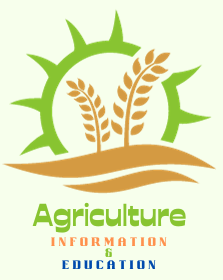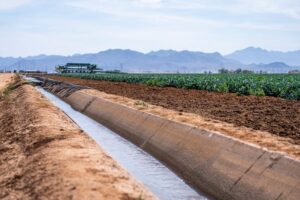Introduction:
Irrigation is a cornerstone of agricultural development, serving as a critical component in ensuring a controlled and reliable water supply to crops. This artificial application of water to the soil proves indispensable in regions where rainfall is irregular or insufficient, allowing farmers to optimize crop growth and yield. The multifaceted role of irrigation in agricultural development encompasses factors such as increased productivity, crop diversification, drought mitigation, income stabilization, land reclamation, and the creation of employment opportunities. Furthermore, the development of irrigation infrastructure contributes to rural development and environmental sustainability.
Water Availability and Crop Yield:
One of the primary contributions of irrigation to agricultural development lies in its ability to guarantee a consistent and adequate water supply to crops. In many regions, reliance solely on rainfall is not sufficient to meet the water needs of crops throughout their growth cycles. Irrigation addresses this challenge by providing a controlled and predictable source of water, helping maintain optimal soil moisture levels. This, in turn, fosters healthy plant growth and significantly increases crop yields.
The ability to regulate water supply through irrigation allows farmers to plan and manage their crops more efficiently. Rather than being at the mercy of unpredictable weather patterns, farmers can schedule plantings and harvests according to their agricultural calendars, contributing to the overall stability and reliability of agricultural production.
Increased Agricultural Productivity:
By ensuring a reliable water supply, irrigation facilitates the cultivation of crops throughout the year. This, in turn, enables multiple cropping seasons, significantly increasing overall agricultural productivity. Farmers can capitalize on favorable conditions and maximize the use of their land, leading to higher yields and increased economic returns.
The extension of the growing season, made possible by irrigation, is particularly crucial in areas with limited rainfall or pronounced dry seasons. Through strategic water management, farmers can stagger plantings and harvests, allowing for a more continuous and varied production cycle.
Crop Diversification:
Irrigation plays a pivotal role in crop diversification, allowing farmers to cultivate a variety of crops with different water requirements. This is especially important in regions where certain crops might be unfeasible due to inadequate rainfall. With irrigation, farmers can expand their crop choices, cultivating those that may have higher market demand or economic value.
Crop diversification contributes to a more resilient and sustainable agricultural system. It reduces the risks associated with dependence on a single crop, making farming operations more adaptable to changing market conditions and environmental factors. Additionally, it enhances food security by providing a diverse range of crops for local consumption and trade.
Mitigation of Drought Impact:
Irrigation serves as a crucial tool for mitigating the impact of drought on agriculture. During periods of water scarcity, whether due to irregular rainfall or prolonged drought, irrigation provides a reliable source of water for crops. This becomes particularly significant in regions vulnerable to climate variability, where droughts can have devastating effects on crop yields and food security.
By acting as a buffer against drought, irrigation systems contribute to the resilience of agricultural communities. Farmers are better equipped to withstand the challenges posed by climate change, ensuring a more stable and secure food supply even in the face of adverse weather conditions.
Stabilizing Agricultural Income:
The adoption of irrigation helps stabilize agricultural income by reducing the reliance on rain-fed agriculture. Rain-fed farming is inherently unpredictable, subject to the vagaries of weather patterns that can vary significantly from year to year. In contrast, irrigation provides farmers with a more reliable and consistent water supply, contributing to a more stable and predictable income.
Stable agricultural income, in turn, has broader implications for rural development and poverty alleviation. Farmers who can depend on a consistent income are better positioned to invest in their farms, adopt modern agricultural practices, and improve their overall standard of living.
Land Reclamation and Rehabilitation:
In arid and semi-arid regions, irrigation can be instrumental in reclaiming and rehabilitating degraded land. Through the controlled application of water, previously unproductive or marginal land can be transformed into arable soil suitable for cultivation. This process not only expands the available agricultural land but also contributes to the overall sustainability of farming practices.
Land reclamation and rehabilitation have profound implications for food production and environmental conservation. By bringing previously unused land into productive agricultural use, irrigation supports efforts to meet the growing global demand for food while minimizing the need for deforestation or the conversion of natural ecosystems into farmland.
Promotion of Intensive Farming:
Irrigation enables farmers to practice intensive farming by providing the necessary water for higher-density planting. Modern irrigation techniques, such as drip irrigation and sprinkler systems, ensure efficient water use and nutrient management. These technologies allow farmers to optimize resource utilization, enhancing the overall efficiency of agricultural practices.
Intensive farming supported by irrigation can lead to higher crop yields on the same or even smaller plots of land. This is particularly important in densely populated areas where agricultural land is limited. By maximizing the productivity of available land, irrigation contributes to meeting the food needs of growing populations without further expanding agricultural acreage.
Infrastructure Development:
The establishment of irrigation systems involves the development of essential infrastructure such as dams, canals, and reservoirs. These structures not only serve the primary purpose of delivering water to crops but also offer additional benefits to communities and regions. Dams, for example, provide water storage for agricultural use, hydropower generation, and flood control.
The construction and maintenance of irrigation infrastructure create employment opportunities in rural areas. This not only contributes to economic development but also fosters skill development and community engagement. The resulting infrastructure can have far-reaching impacts on the overall development of the region.
Rural Employment Opportunities:
Irrigation projects generate employment opportunities in various stages, from the construction of infrastructure to the maintenance and operation of irrigation systems. The development of irrigation-related jobs can help alleviate rural unemployment and underemployment, providing livelihoods for local communities.
The creation of employment opportunities in agriculture is particularly significant in developing countries, where a substantial portion of the population relies on agriculture for their livelihoods. As people find employment in irrigation projects, it stimulates economic activity in rural areas, contributing to poverty reduction and improved living standards.
Environmental Sustainability:
While irrigation is indispensable for supporting agriculture, it is essential to adopt sustainable practices to minimize potential negative environmental impacts. Poorly managed irrigation systems can lead to issues such as waterlogging, soil salinity, and depletion of water resources. Sustainable irrigation practices involve efficient water management, the use of modern irrigation technologies, and consideration of ecological factors.
Efficient irrigation techniques, such as drip irrigation and precision farming, help optimize water use, reducing the overall environmental footprint of agriculture. Additionally, environmentally friendly practices, such as rainwater harvesting and water recycling, contribute to sustainable water resource management.
Conclusion:
In conclusion, the role of irrigation in agricultural development is multifaceted and integral to global food security and economic stability. From ensuring reliable water supply to crops to supporting rural development and environmental sustainability, irrigation is a linchpin in the quest for sustainable and resilient agricultural systems. As the world faces the challenges of a growing population, climate change, and resource scarcity, the responsible and efficient use of irrigation will continue to play a pivotal role in shaping the future of agriculture. It is crucial for policymakers, farmers, and communities to collaborate in adopting and promoting sustainable irrigation practices to ensure a balance between increased agricultural productivity and environmental conservation.


Good sir ji
Good
Well done
Thank you so much
Thank You